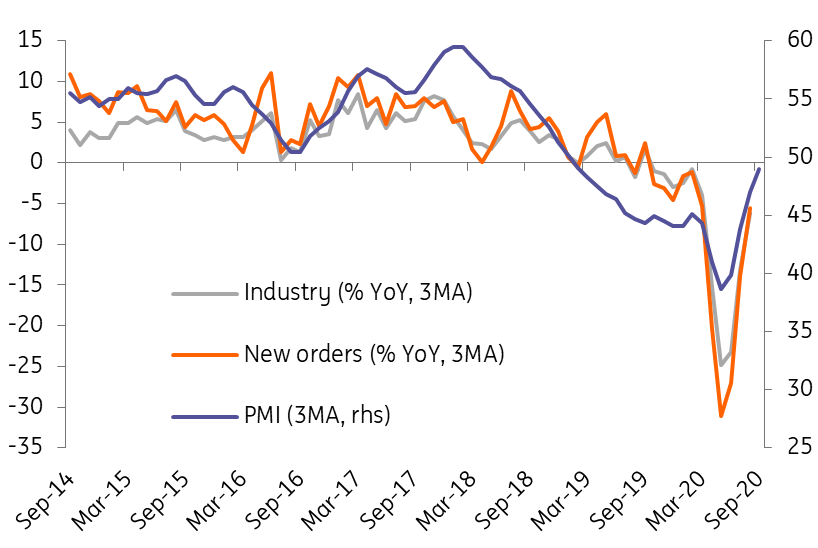Another blow for Czech industry as the automotive sector slumps
Czech industrial production fell by 0.9% month-on-month and the year-on-year decline slightly increased to -5.5%, mainly due to weaker production in the automotive sector. Since the start of the year, Czech industry has dropped by 12%
Czech industrial production disappointed in August and the YoY decline fell by 8% (-5.5% if adjusted for working day bias); the market expected -4.3% YoY fall. The YoY fall intensified in August broadly, but particularly in the all-important automotive sector, which fell by almost 12% YoY (-8% adjusting for one working day difference), while YoY dynamics were just slightly negative in July (-0.7% YoY).
| -8% |
Czech industrial production in August (YoY)-5.5% YoY working-day-adjusted |
| Lower than expected | |
New orders also weaker
New orders in industry were also not favourable, as their year-on-year decline intensified from -3.6% in July to almost 10%, which was mainly driven by a decline in foreign orders (-11.1 YoY). Even here, however, the effect of fluctuating summer months plays its part and the numbers must be taken with a degree of caution.
Industrial production (output, orders, PMI)

Less reliable summer months' data
As such, the August industry numbers disappointed (as in Germany) and did not follow the favourable July developments. But this could be due to the different YoY distribution of company holidays, which caused better than expected July figures and on the contrary, worse August figures. On average, industrial production was 6.5% YoY weaker during the summer months and -5.3% YoY if you take in the working day bias, which is relatively solid when you consider the double-digit fall in the spring.
Although September's industry-leading indicators were rather positive, both in Czech industry as well as in Germany, the advent of the second wave of the epidemic will hamper further industrial recovery. From January to August, Czech industry fell by 12.2% year-on-year, but the overall decline should gradually fall below 10% by the end of the year, despite the second wave of the Covid-19 outbreak.
This publication has been prepared by ING solely for information purposes irrespective of a particular user's means, financial situation or investment objectives. The information does not constitute investment recommendation, and nor is it investment, legal or tax advice or an offer or solicitation to purchase or sell any financial instrument. Read more
Download
Download snap